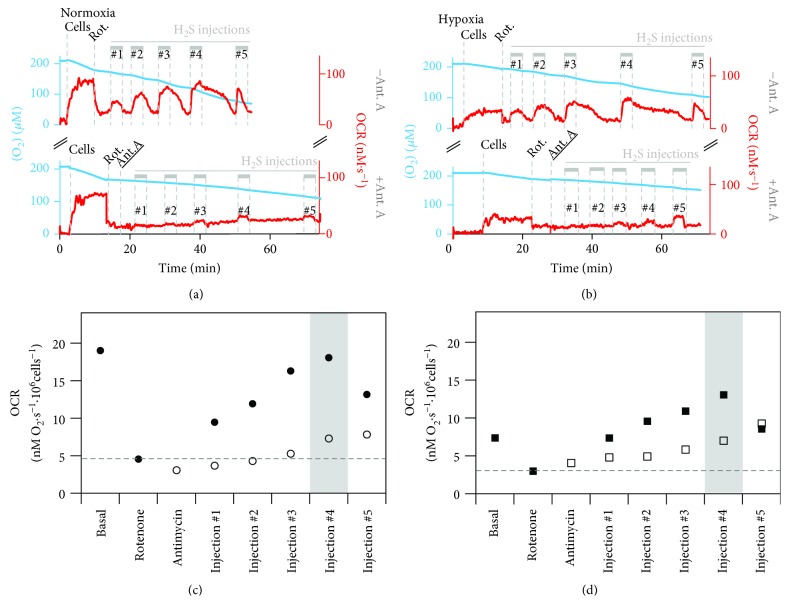Figure 1.
Stimulation of O2 consumption by sulfide. Representative oxygen consumption traces (blue) and corresponding O2 consumption rate (OCR, red traces) acquired with normoxic (a) or hypoxia-treated SW480 cells (b), following the addition of cells (4 × 106), rotenone (Rot., 5 μM) either alone (top traces) or plus antimycin A (Ant. A, 5 μM, bottom traces), and subsequent injection of a sulfide solution (3-5 mM) at increasing rates (10 nL·s−1, 20 nL·s−1, 40 nL·s−1, 80 nL·s−1, and 160 nL·s−1, corresponding, respectively, to injections #1 to #5). (c, d) OCR values obtained from the oxygraphic traces, respectively shown in (a) and (b), measured at basal condition and upon sulfide injection at increasing rates after addition of rotenone alone (full symbols) or rotenone plus antimycin A (hollow symbols). Mitochondrial H2S consumption in normoxic cells was calculated by determining the OCR measured at the highest non-inhibitory H2S injection rate (highlighted with grey bar in (c)) and subtracting the OCR measured after the addition of rotenone (horizontal dashed line in (c)), yielding ΔOCR(-Ant). Then, the ΔOCR at the corresponding sulfide injection in the antimycin A-containing measurement was calculated in the same manner, yielding ΔOCR(+Ant). By calculating ΔOCR(‐Ant) − ΔOCR(+Ant), the genuine mitochondrial H2S-dependent OCR (OCRmitH2S) was determined. Finally, OCRmitH2S was multiplied by 1.33 to account for the number of H2S molecules consumed per O2 molecule, yielding an estimated sulfide oxidizing activity of 12.7 nM H2S·s−1·106 cells−1. Employing the same procedure for cells exposed to hypoxia (b, d), an activity of 9.5 nM H2S·s−1·106 cells−1 was estimated.

